Onychomycosis is a fungal damage to the nail plate. The disease can be caused by dermatophytes or microsporia. Fungus negatively affects the basis of nail construction - keratin and, gradually eating it, causing deformation.
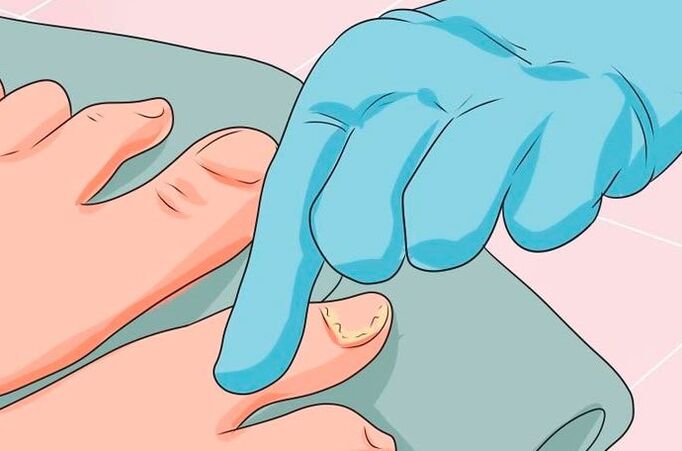
The following types of onychomycosis exists:
- Normotorophical. Change the color of the nails, the appearance of the strips and the spots.
- Hypertrophic. Not only does the color change occur, but also a slight deformation. Often, nails are defective from the edges.
- Onycholithic. Nails are destroyed, atrophied and rejected.
The fungus on the toenail looks not only due to the decline in immunity. About 70% of people are infected from sick people, and often they are relatives. The smallest scale of the skin falls on the household goods, and, in contact with healthy nails or skin, infects the healthy.
Often, infections occur through:
- Wipes.
- Sponges.
- Towel.
- Carpet.
- Shoes.
- Manicure Accessories.
When visiting the beach, sauna and slippers without slippers, there is a high risk of infection with foot fungus. With high humidity and temperature, the infection occurs more frequently.
It is very concerned about being in a public place where people go barefoot. Fungus is resistant to low and high temperatures, and in the beach sand they maintain their viability for several months.
Healthy tissue is gradually affected by fungus. Much depends on the type of pathogen, but some signs allow us to distinguish some of the main stages of onychomycosis development:
- Normotorophical, or early. There is no obvious manifestation, at this stage it is difficult to see the infection with fungus. The nails become more matte, the color can change slightly, small cracks occur, the surface distortion. Burning and itching may be felt. This period is easily confused with other diseases: psoriasis, liver change. Therefore, to confirm the diagnosis, it is recommended to contact a dermatologist.
- Hypertropic forms arise if steps are not taken in the early stages. Symptoms become more noticeable. The nails are thick and dark, the shape of the disability plate, it collapses and destroys.
- Atropic, or ignored. It seems that when the infection extends to the cuticle, the last one refuses, inflam and swelling. The entire surface of the nail plate changes the color, it is completely separated from the bed. Treatment can be ineffective, nails are not always stored because of its atrophy.
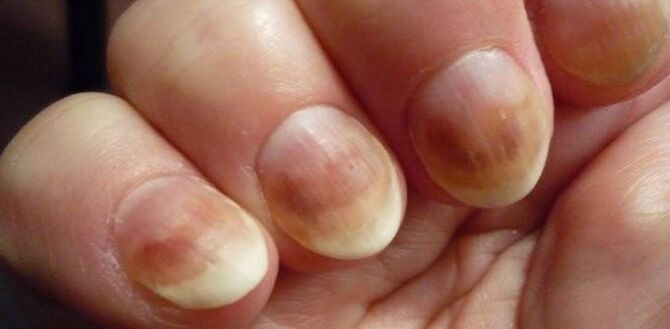
Signs -Nail fungus:
- The nail plate begins to change the shade, it becomes boring. As a result, he lost a healthy pink color. When the parasite fungus is on the surface, the nails become white or yellow. So it usually happens to the finger. With other types of damage, nails can take any shade: from green, gray to black.
- Thickening or fatigue of the nail plate - when you see that the nail thickness has changed, this is a clear sign of fungal damage. At the same time, the nail plate loses elasticity, becomes rough, difficult or otherwise too soft, starts to collapse. Normal nail thickness on the finger does not exceed 0. 5 mm, toenail up to 1 mm.
- Nail plate stratification, lagging behind the surface of the nail bed is a sign of an advanced level of disease when the nail structure changes. He became loose, uneven, covered with fur.
- Discomfort - to understand that fungus has appeared on the nails by the unpleasant sensations that accompany the disease. There are severe itching, sometimes painful sensations.
- Unpleasant odor - these symptoms are very important from onychomycosis on the toenails. When they start smelling unpleasant, despite regular hygiene procedures, you should consult a doctor.
Nail fungus is often accompanied by a very unpleasant odor
The general symptoms of the disease are listed above. But how specifically onychomycosis shows itself depending on the type of fungus, which is impressive of the nail plate.
Each multiple mycosis has a common sign:
- Flexible Fungi - leads to the rapid depletion of the nail plate. It broke, starting to peel off the nail bed. The first nails become yellow, and then get brown. In the form of neglected diseases, the skin around the nails is swollen, squeezing.
- Mold - parasitize on the surface of the nail plate, without penetrating deeper. Thanks to this, this type of disease is easier to treat than others. The main sign of the disease is the change in the color of the nail. The shade can be anything: from white, green to gray, black. If you do not start the right treatment on time, the fungus spreads to other nails as well as the skin. There are severe itching, pain, especially when walking.
- Dermatophyte - develops when the nails are influenced by the Trichophyton SPP. , As well as SPP epidermophyton and Microsporum SPP. The first signs of the disease -spots or gray strips, yellow shade are formed on the nail plate. As the disease progresses, the volume increases, and the nails begin to peel.
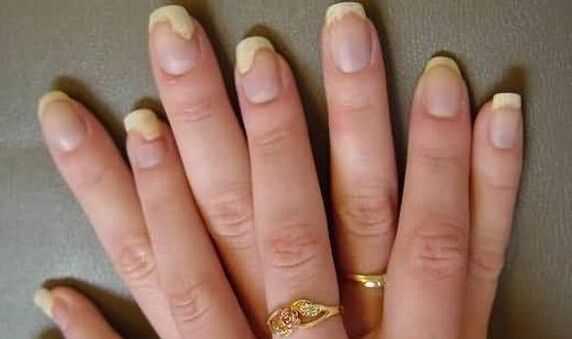
Dermatophyte one of the typical forms of nail fungus
To find out the types of microses that are beaten by nails that are very important for proper treatment. The active components of most pharmacological drugs are designed to destroy certain types of fungi.
Onychomycosis begins with a wound that is not important from the nails, so many people initially do not pay attention to the change in shade and the formation of spots. In the absence of treatment, mycosis spreads quickly, affecting all large areas of the infected nail, switching to healthy nails and infecting others.
There are 3 stages of development of nail mycosis:
- Early stage - obvious symptoms, uncomfortable sensations, such as itching, pain, often absent. Small places, stripes, almost indistinguishable interspers appear on the nail plate. It is the easiest to see it in the thumb.
- The second or progressive onychomycosis level - the number of spots and grooves increases, they become large and obvious. The color of the nail plate changes, it fades and begins to shape.
- Advanced stages - true nail plates - actually losing aesthetic appearance, they are too thick or very fragile. The colors of the nails are yellow, brown, green, black. It is exfoliating, there is a risk of complete nail loss.
The first sign of the presence of nail fungus
Previously it was possible to detect onychomycosis, the higher the probability that the disease quickly eliminated the disease. With efficient surgical therapy, the body suffers minimal, so when the first symptom of mycosis appears, you must consult your doctor.
The first signs of nail mycosis appear nearly after the infection. If after visiting public places such as pools, sauna, bathing in gym, beach, nails faded, they start to itch, then this may be the first sign of onychomycosis.
Healthy nails are hardly exposed to fungal infections. It begins to grow rapidly when only on damaged nail plates.
The recovery of the people
There are many folk medicine that will help cure nails affected by the fungus in the early stages. Consider effective, but at the same time simple recipes.
Sometimes ordinary iodine can help overcome fungus quickly
- Iodine - daily until the symptoms disappear, use 1 5% iodine drop to the affected nails. This procedure is performed in the morning, as well as in the evening. More ingredients on iodine treatment.
- 1 teaspoon of iodine, vinegar, glycerol mixed and diluted with 6 tablespoons of water. The mixture produced for 10 consecutive days -rubbing nails. The composition of the nail plate must be left overnight.
- Vinegar - Prepare a bath by melting 1 part vinegar 9% with 8 parts of warm water. To soar in his feet or his arm for 20 minutes. Handle 7 procedures daily. More ingredients on vinegar treatment.
- Ointment from eggs - place raw chicken eggs in a shell in a glass and pour vinegar 9%up. When the shell dissolves, remove the remaining film and mix the eggs with vinegar. The resulting mixture is used twice daily to the affected area for 2-3 weeks.
Ointment from chicken eggs is also quite effective against nail polish
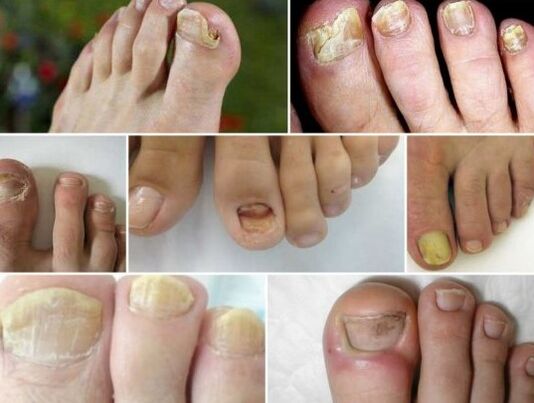
- Hydrogen peroxide - dilute in 2 liters of water 2 tablespoons of 3%hydrogen peroxide. To jump hands or feet, depending on the place where the fungus is located for 20 minutes. Repeat the procedure for 7-10 consecutive days.
- Compression of peroxide - To disinfect the cotton swab with peroxide, attach it to the nail where there are signs of fungus. Before that, the arm or leg must be afraid of the soda bath. To prepare, 1 teaspoon of soda is diluted in 1 liter of water. The compress above is wrapped with cellophane or food film and left for 60 minutes. This is necessary so that the peroxide does not evaporate. Repeat the procedure for 10-14 days twice a day.
- Propolis tincture - wet cotton cotton into a 20% propolis alcohol tincture and attach to the affected area. Make sure the lotion is during the dry composition. Repeat daily until recovery. 1-2 procedures are enough a day.
- Washing powder - This method is ideal for the treatment of toenails. It should dissolve 100 g of washing powder, containing many alkali, in 2 liters of water. Hold the bath for 15 minutes. Repeat 10-14 procedures while symptoms disappear.
- Garlic - cut into peeled garlic cloves, wet in salt, and then grate the nail plate. Repeat twice daily before loss of symptoms.
- Ammonia - Melt in 1 cup of water 1 teaspoon of ammonia. The resulting solution has been absorbed with cotton cloth. It needs to wrap your feet or arms and leave this compress at night. Repeat the procedure for 7 days daily.
- Onion - grind the onion to a shiny consistency and attach to the affected nail for 30 minutes. Repeat twice a day before recovery.
Chopped onions will help restore your nails with a healthy appearance
- Mix chamomile, smart mint, you can take dried or fresh herbs. Put the resulting composition on the feet or gloves at night. Herbs need to be changed every evening. Repeat the procedure in combination with other recipes while the symptoms of the fungus disappear.
- Boric acid - a cotton swab with boric acid is used for pre -steamed nails. You need to keep the lotion for 30 minutes. This procedure is repeated 10 consecutive days daily.
- Celandine Oils and Tea Wood - Mix this product in the same proportion, soak gauze with the resulting composition and apply it on nails for 20 consecutive days - for 45 minutes. This recipe is contraindicated in pregnant women.
- Soda - Melt the soda with a little water to gruel consistency. Apply on nails for 20 minutes, and then rinse with warm water for 10-12 days twice daily.
- Apple vinegar - melt with olive oil. The required proportions are 2 parts of the vinegar to 1 part of the oil. Apply the mixture to the affected nail plate as the nail grows.
- Tea tree oil - Apply a few drops of oil on the nails, while the nail plate area affected by the fungus will grow completely.
- Verba - grind 500 g of young willow shoots, pour 2 liters of water, cook until boiling. From boiling three times a week, take a bath for hands or feet for 20 minutes until recovery.
- Nettle - Brew 3 tablespoons in 400 ml of water. By boiling this, get a wet tampon and apply it to the nail plate twice a day before recovery.
- Blend the mountain ash leaves and place on the nails with a thick layer, and then wrap it with a baking film for 30 minutes. Repeat the procedure daily 12-14 days.

- Fut of the skin.
- Reduces immunity.
- Family members who suffer from fungal loss.
- Old age.
- Diabetes.
- Presence of microtraumas and burrs.
- Increased sweating.
- Unknown and poor shoes.
- The habit of walking barefoot in a public place.
- Accommodation and work in a wet climate.
- Long -term wears artificial nails.
- General health.
- Vulnerability of infection.
- Level of moisture and thermal background.
- The type of nail plate (nails on the fingers grow slower).
- Onychomycosis of distal submarine.
- Lateral onychomycosis.
- Onychomycosis of white surface.
- Onychomycosis proximal tray.
- The amount of dystrophic onychomycosis.
How can you get an infection with fungus?
Infections with nail mycosis can occur anywhere: from a public visit to your own home. It is sent directly from person to human, and through objects where a person suffering from mycosis is contacted. Fungus penetrates through microcucco, bruises, other damage.
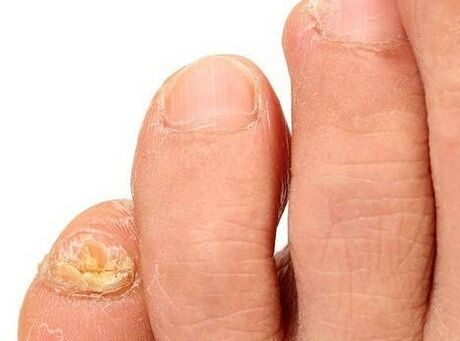
A place where you can be infected with a micosis:
- Public places where people are often chicken, especially if moisture increases there. In such microclimate, Mikoz maintains life for a long time. Examples of such institutions are the soul in the fitness center, sauna, bath.
- Dressers in shops, sports complexes and other places.
- Manicure Room - If you do not process poor tools after he or she creates a manicure or pedicure to someone with fungus, there is a very high probability that the next customer is infected with the disease.
- Visit and at home - when someone wears clothes, shoes where the fungus remains, using towels used by onychomycosis. The fungus may be on the nail if you walk barefoot on the floor.
- Beach - In the sand on the beach there is always a lot of fungal disputes. If you walk barefoot, they will penetrate the microcess and the disease is inevitable. In addition, you can be infected on the beach through the sunset.
- Public transport - by hand, in which the patient touches.
- Shop - while trying out shoes, which previously measured patients with nail fungus.
There is a huge chance of being infected with nail fungus in public transport
In the above place, you should be very neat to prevent infection.


















